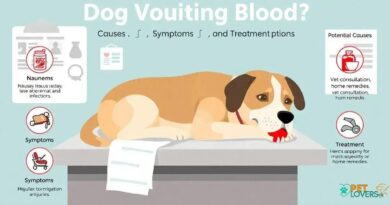O que é knee stability in dogs
Understanding Knee Stability in Dogs
Knee stability in dogs refers to the ability of the knee joint, or stifle, to maintain its proper alignment and function during movement. This stability is crucial for a dog’s overall mobility and quality of life. The knee joint is a complex structure that includes bones, ligaments, tendons, and cartilage, all of which work together to provide support and flexibility. When any part of this system is compromised, it can lead to instability, pain, and decreased mobility.
The Anatomy of the Dog’s Knee Joint
The dog’s knee joint is primarily composed of the femur (thigh bone), tibia (shin bone), and patella (kneecap). The stability of this joint is maintained by several key ligaments, including the cranial cruciate ligament (CCL) and the caudal cruciate ligament (CaCL). These ligaments prevent excessive movement and ensure that the bones remain properly aligned during activities such as walking, running, and jumping. Understanding the anatomy of the knee joint is essential for recognizing potential issues related to knee stability in dogs.
Common Causes of Knee Instability
Knee instability in dogs can arise from various factors, including injury, congenital defects, and degenerative conditions. One of the most common causes is a rupture of the cranial cruciate ligament, which can occur due to sudden trauma or gradual wear and tear. Other factors, such as obesity, improper exercise, and certain breeds predisposed to joint issues, can also contribute to knee instability. Identifying the underlying cause is crucial for effective treatment and management.
Signs of Knee Instability in Dogs
Pet owners should be vigilant for signs of knee instability in their dogs. Common indicators include limping, difficulty in rising or jumping, swelling around the knee joint, and reluctance to engage in physical activities. Dogs may also exhibit changes in their gait, such as favoring one leg over the other. If any of these signs are observed, it is essential to consult a veterinarian for a thorough evaluation and diagnosis.
Diagnosis of Knee Stability Issues
Veterinarians use a combination of physical examinations, imaging techniques, and diagnostic tests to assess knee stability in dogs. A thorough physical exam may reveal joint swelling, pain, or abnormal movement patterns. X-rays can help identify bone abnormalities, while advanced imaging techniques like MRI or CT scans may be used to evaluate soft tissue structures, including ligaments and cartilage. Accurate diagnosis is vital for determining the appropriate treatment plan.
Treatment Options for Knee Instability
Treatment for knee instability in dogs varies depending on the severity of the condition and the underlying cause. Conservative management may include rest, weight management, physical therapy, and anti-inflammatory medications. In more severe cases, surgical intervention may be necessary to repair or stabilize the knee joint. Common surgical procedures include tibial plateau leveling osteotomy (TPLO) and lateral suture stabilization. The choice of treatment should be tailored to the individual dog’s needs.
Preventive Measures for Maintaining Knee Stability
Preventing knee instability in dogs involves a combination of proper nutrition, regular exercise, and weight management. Maintaining a healthy weight reduces stress on the joints, while regular, low-impact exercise helps strengthen the muscles surrounding the knee. Additionally, avoiding high-impact activities, especially in young or predisposed breeds, can help prevent injuries. Regular veterinary check-ups are also essential for early detection of potential issues.
The Role of Physical Therapy
Physical therapy can play a significant role in the rehabilitation of dogs with knee instability. A certified canine rehabilitation therapist can design a customized program that includes exercises to strengthen the muscles around the knee, improve range of motion, and enhance overall mobility. Techniques such as hydrotherapy, massage, and electrical stimulation may also be employed to aid recovery and promote healing.
Living with a Dog with Knee Stability Issues
Caring for a dog with knee stability issues requires patience and understanding. Owners should be prepared to make lifestyle adjustments, such as modifying exercise routines and providing a comfortable environment for their pets. Regular follow-ups with the veterinarian are crucial to monitor the dog’s progress and make necessary adjustments to the treatment plan. With proper care and management, many dogs can lead happy and active lives despite knee stability challenges.




